
- Home
- News
- Analysis
- States
- Perspective
- Videos
- Education
- Entertainment
- Elections
- Sports
- Features
- Health
- Budget 2024-25
- Business
- Series
- Bishnoi's Men
- NEET TANGLE
- Economy Series
- Earth Day
- Kashmir’s Frozen Turbulence
- India@75
- The legend of Ramjanmabhoomi
- Liberalisation@30
- How to tame a dragon
- Celebrating biodiversity
- Farm Matters
- 50 days of solitude
- Bringing Migrants Home
- Budget 2020
- Jharkhand Votes
- The Federal Investigates
- The Federal Impact
- Vanishing Sand
- Gandhi @ 150
- Andhra Today
- Field report
- Operation Gulmarg
- Pandemic @1 Mn in India
- The Federal Year-End
- The Zero Year
- Premium
- Science
- Brand studio
- Newsletter
- Home
- NewsNews
- Analysis
- StatesStates
- PerspectivePerspective
- VideosVideos
- Entertainment
- ElectionsElections
- Sports
- Features
- BusinessBusiness
- Premium
- Loading...
Premium - India-Canada ties
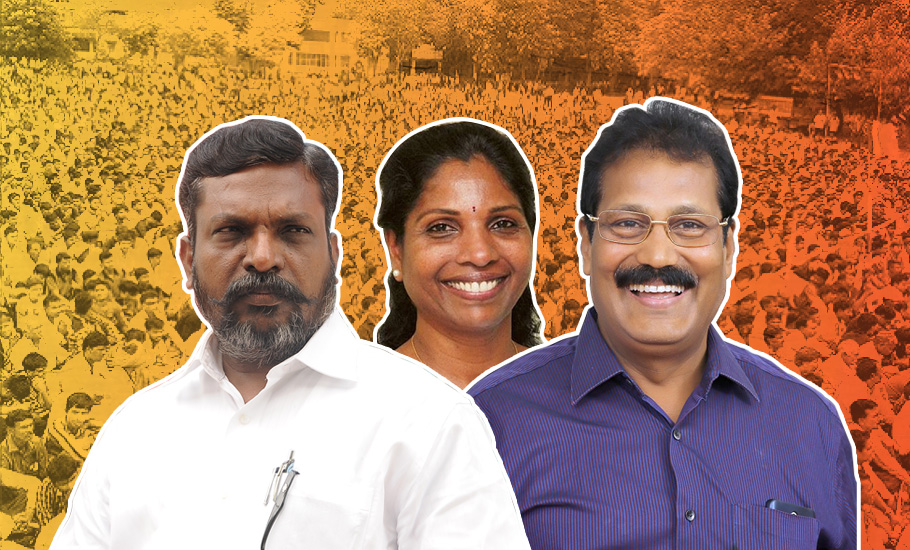
In Hindutva vs Dravidian nationalism, where does Dalit politics stand in TN?
Formed as a result of increased caste atrocities in the state at the hands of the intermediate castes, the Dalit parties and outfits, however, seem to be finding it difficult to position themselves in the political spectrum between the proponents of Hindutva and the champions of now-softened Dravidian politics.

Back in the mid-1990s, a young and restless Satheesh Kumar found himself thrown into the vortex of a rising Dalit movement in Tamil Nadu amid growing caste-related violence. For Satheesh and many other Dalit youths like him, it appeared that the time had finally come when Dalit politics wouldn’t be overshadowed by the ‘non-inclusive’ Dravidian ideology that failed to mainstream...
Back in the mid-1990s, a young and restless Satheesh Kumar found himself thrown into the vortex of a rising Dalit movement in Tamil Nadu amid growing caste-related violence. For Satheesh and many other Dalit youths like him, it appeared that the time had finally come when Dalit politics wouldn’t be overshadowed by the ‘non-inclusive’ Dravidian ideology that failed to mainstream the subalterns.
By the end of the decade, their hopes rose high with the two largest Dalit movements—Viduthalai Chiruthaigal Katchi (led by Thol Thirumavalavan) and the K Krishnasamy-led Puthiya Tamilagam—entering electoral politics with the promise of creating a platform which would include the Dalits and their issues in mainstream Tamil politics.
More than two decades later, Satheesh is no longer young nor hopeful. While the caste divides have inevitably deepened, atrocities against Dalits continue with absolute impunity in the state.
“The dreams that we saw in those heady days have remained just that—dreams,” says Satheesh. He, however, refuses to put all blame on either Thirumavalavan or Krishnasamy. He rather calls Thirumavalavan’s entry into the landscape of Dravidian politics as a watershed moment for Dalit politics. “Along with. Krishnasamy, Thirumavalavan succeeded in creating a Dalit voice for the first time in post-independent Tamil politics.”
Then, what went wrong with Dalit politics in Tamil Nadu?
The shrinking space
With Assembly elections in Tamil Nadu just six months away and the BJP’s constant attempts to make inroads into the state, the fight between Hindutva nationalism and Dravidian politics seems to have intensified like never before.
Home minister Amit Shah’s recent visit to Tamil Nadu and the state BJP chief L Murugan’s Vel Yatra dedicated to Lord Murugan (much on the lines of the infamous Rath Yatra in 1992), only go on to show the increasing saffron push to capture a substantial vote share in a state that has been ruled by Dravidian parties for decades.
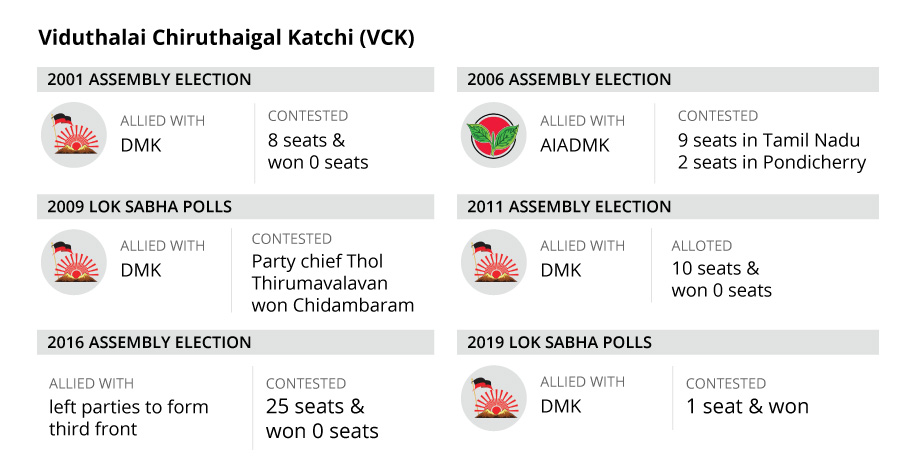
Along with other similar engineered incidents, all these moves by the BJP seem to be making the right noises in the state.
The silence of the Dravidian parties, the DMK and the AIADMK, coming from a rationalist anti-Brahmin movement, on these issues as they do not want to be seen to be against Hindus, is only helping the BJP further.
But, for the BJP, a north-based upper caste party of mostly Hindi speakers, to wean away the Hindus of Tamil Nadu might be a task easier said than done, and Amit Shah knows that too well.
Having allied with the incumbent AIADMK, his mission is to break the key opponent, DMK. Even as he focuses his efforts on this, another issue that would be nagging him is the Dalit vote bank.
The Dalit factor
Formed as a result of increased caste atrocities in the state at the hands of the intermediate castes, the Dalit parties and outfits, however, seem to be finding it difficult to position themselves in the political spectrum between the proponents of Hindutva and the champions of now-softened Dravidian politics.
The Dravidian parties—the DMK, the AIADMK and other splinter groups from the two Dravidian majors—over the years have heavily relied on the caste-Hindu vote bank by polarising the intermediate castes. Despite successfully keeping the right-wing forces out of the state, both the Dravidian parties failed to dismantle the caste hierarchies and check caste atrocities against the Dalits.
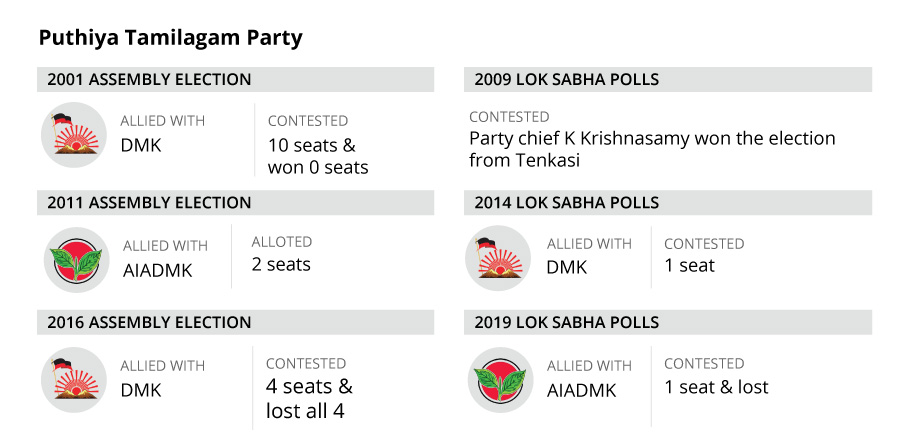
The unquestionable atrocities against the Dalits led to the emergence of Viduthalai Chiruthaigal Katchi (VCK, initially called as Dalit Panthers of India) and Puthiya Tamilagam (PT). Although both the Dalit social movements vehemently fought for the rights of Dalits, they initially choose to be out of the electoral politics and contested the elections only later.
Interestingly, the Dalit movement in Tamil Nadu actually predates the Dravidian movement and started as far back as in the 1870s. Yet it was only in the late 1990s that with the emergence of the two Dalit outfits, having the support of Parayars and Pallars (Scheduled Castes), Dalit politics in Tamil Nadu emerged as an alternative opposing Dravidian politics.
More than two decades down the lane, many among the Dalits feel the movement has not just lost the steam but the opportunity has passed.
Lost opportunity?
“It was a period when Dalit movements were just launched in the state. So, everyone was hoping for a consolidation. But, we have crossed the stage and now it will work electorally only to an extent,” says Dalit intellectual and writer Stalin Rajangam.
Despite being an electoral factor with about 21% of Dalits in the state, the parties formed to protect the rights of the Dalits have sided with either one of the Dravidian majors. According to the 2001 census, there are about 76 Scheduled Castes, of which 93.5% is accounted for by Adi Dravidars, Pallars, Paraiyars, Chakkiliyars and Arunthathiyars.
Yet over the years while VCK has managed to find some success electorally, PT has not made any major on the ballots, even though it maintains a strong presence on the ground.
Although Thirumavalavan claims to be a party for all democratic forces and vehemently fights for the rights of Dalits, he is mostly seen as a leader of the Paraiyars, a caste to which he belongs. Krishnasamy, on the other hand, is seen as a leader of the Pallars.
Though the two leaders worked together in the initial days, they could not continue for long due to differences of opinion. Subsequently, Krishasamy switched sides and has been demanding the removal of his Devendrakula Vellalar or Pallar from Scheduled Caste category and including them under the Most Backward Community (MBC) category.
Rajangam insists that Dalits will have a say in Tamil politics only when they prove their electoral strength. “And electoral strength is possible only when you work for the people’s right. The Dalit parties should first concentrate on the cause for which they were initially formed and do more ground work.”
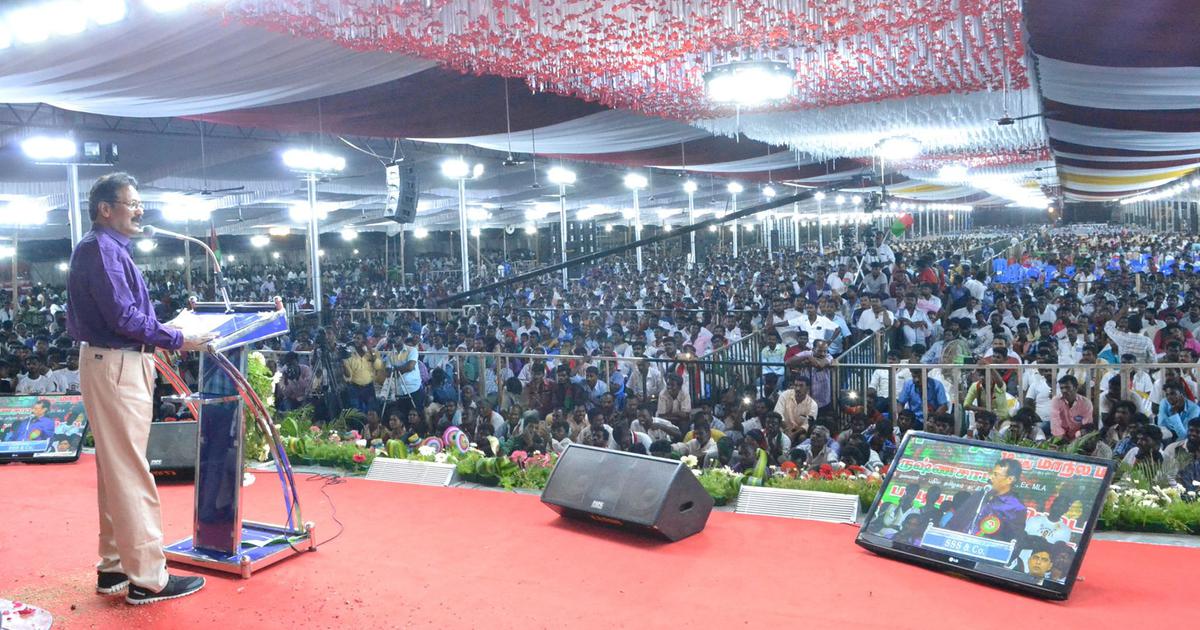
Unless the Dalit parties don’t demonstrate their numbers, the bargaining power and the space for the Dalit politics would keep on shrinking, he says.
But VCK deputy general secretary Vanni Arasu begs to differ. He says ground work alone is not enough for a Dalit party to trigger electoral change in mainstream political space.
“Only if we strengthen the workers ideologically, we will be able to build a party and can survive in the long run. We have enough examples in Tamil Nadu, where a party without strengthening its ideological base managed to become an opposition party but could not retain its power and cadres,” he says, in an apparent reference to actor Vijayakanth’s DMDK.
Although a number of Dalit outfits and smaller parties have come up since the late 1990s, most of the Dalit intellectuals look at Thol Thirumavalavan as the leader of all Dalits in the state.
“If not we could not consolidate the 21% of the Dalits, at least they could consolidate 15% of the votes, which is easily possible for a party like VCK,” Stalin feels.
Behind the alliances
Despite the callous nature of Dravidian politics, Karthikeyan Damodaran, a research scholar at University of Edinburgh, feels that Thirumavalavan would not mind going along with them, but it would be ideologically tough for him to side with Hindutva.
“On the one hand, they have to keep a check on the Dravidian hegemony. On the other, they have a major threat from Hindutva politics trying to spread its tentacles. The former is dominated by intermediate caste with less and less room for Dalit autonomy. But most importantly it has directly or indirectly created an increasing trend of anti-Dalit psyche in the state,” he says.
But Vanni Arasu claims that only joining hands with the Dravidian parties could get them the desired results.
“Dravidian parties may be dependent on the caste-Hindu vote bank, but when we are in the alliance they have an internal pressure to speak for the Dalits as well. It’s a quagmire for the Dravidian parties as well. They may not be willing to ‘hurt’ and damage their caste hindu vote bank, at the same time cannot be silent for a long time over caste atrocities issue.”
Vanni Arasu also recalls how despite being in alliance with the Dravidian majors, VCK was able to pressurise the Dravidian leaders to condemn caste atrocities and form a fact-finding team.
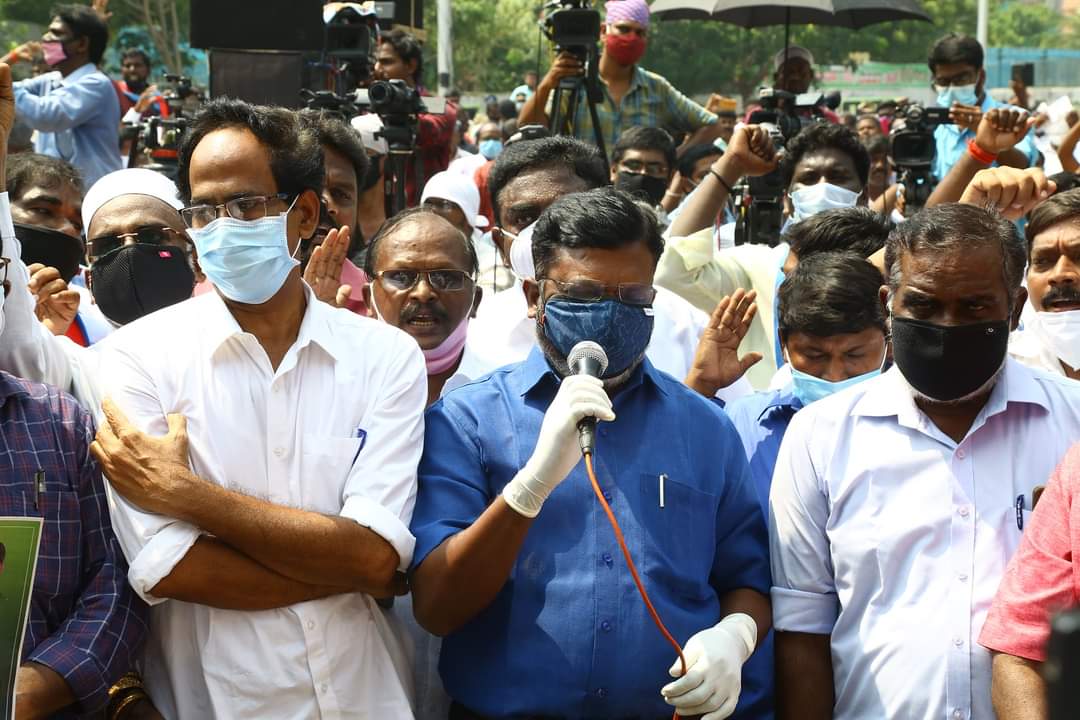
“When huts of Dalit people were burnt in Dharmapuri, it was the VCK who met the then chief minister M Karunanidhi and forced him into take action. Based on that a fact-finding team was sent to the spot. A report was also submitted soon and action was taken against the accused people,” Vanni Arasu adds.
Another VCK functionary who wishes to remain unmanned recalls how J Jayalalithaa warned the Pattali Makkal Katchi (PMK) leaders after they allegedly burned the huts of Dalits in Mahabalipuram near Chennai.
“The aim of all Dalit parties are the same. Dalits should be consolidated to attain power. But the problem is that every Dalit leader primarily became a leader for their own caste and that’s why sub-castes in Scheduled Castes was forced to form a party for themselves,” says Ilavenil, general secretary of Tamil Puligal Katchi, a party for Arundhathiyars.
Former IAS officer P Sivagami, who founded a political party Samuga Samathuva Padai based on the principles of BR Ambedkar, is of the opinion that Dravidian parties cannot treat them as they used to do earlier.
“The position of Dalit parties is not the same as it was earlier. Earlier, it was concentrated in one region of the state, but now with the emergence of more Dalit parties and movements, every party has their base across the state. Once, people used to portray VCK as a party having a base in the northern region, but now it has its influence across the state,” she says.
The primary agenda is to fight the party propagating Sanatana Dharma, Sivagami says, hinting at the BJP.
“Only when we look back do we realise that Dravidian parties took the right line earlier. Now with the rise of the Dalit movements, the decision to stand with the Dravidian majors and fight the Hindutva party will be known as the right decision in future.”
One can at least question the Dravidian parties, Sivagami adds, since they are also in line with the Dalit parties on almost all the issues.
But Tamil Nadu Untouchability Eradication Front affiliated to Communist Party of India’s general secretary S Samuel Raj says this is not the kind of the Dalit politics that Dr Ambedker wanted to do.
“Until his death, even Ambedkar was not accepted by the people belonging to the other scheduled caste and that’s when he started consolidating all Dalits across the country under one umbrella. But, that could not happen.”
It is, he adds, not because the Dalit movements don’t want to unite. “The capitalists will not allow them to unite.”

